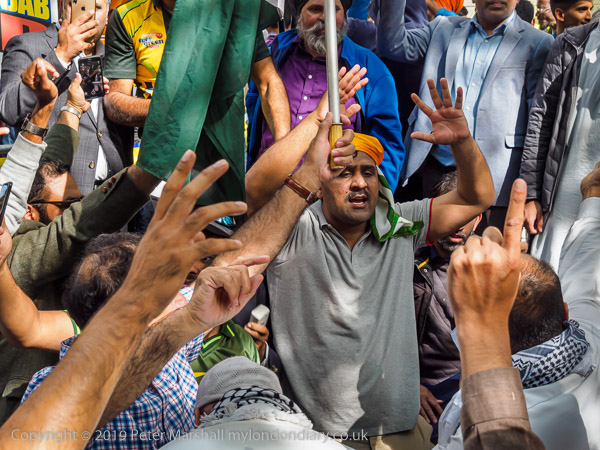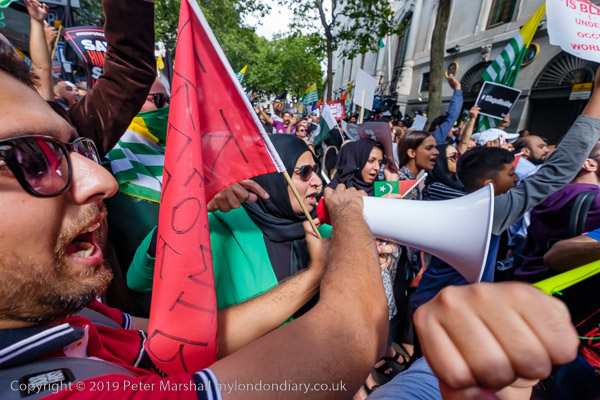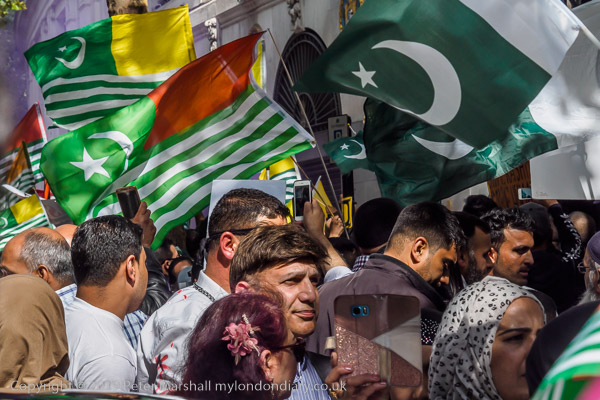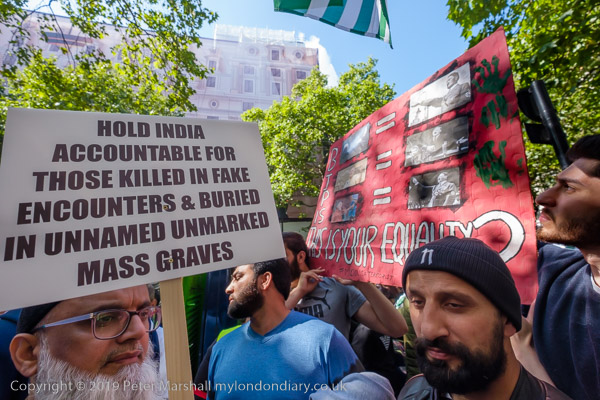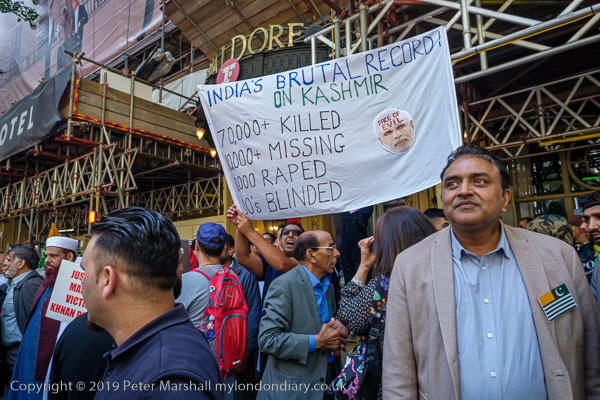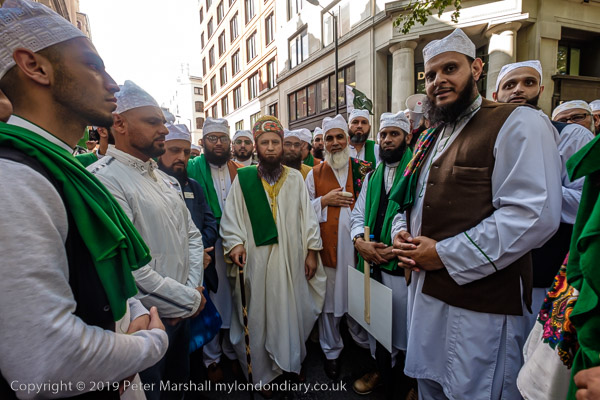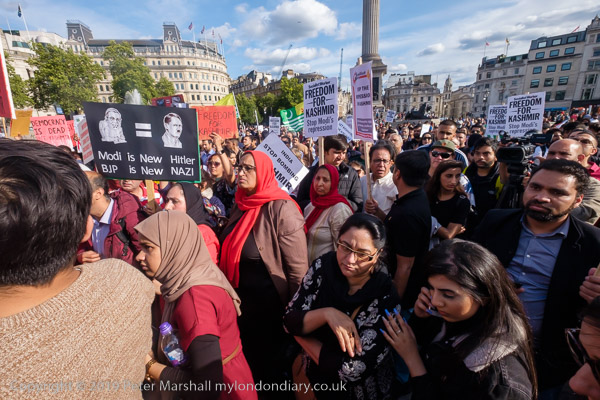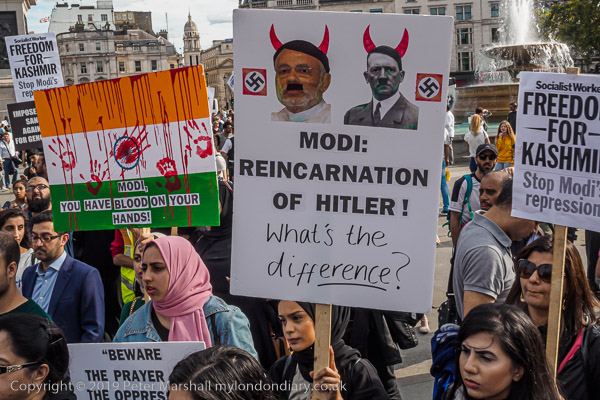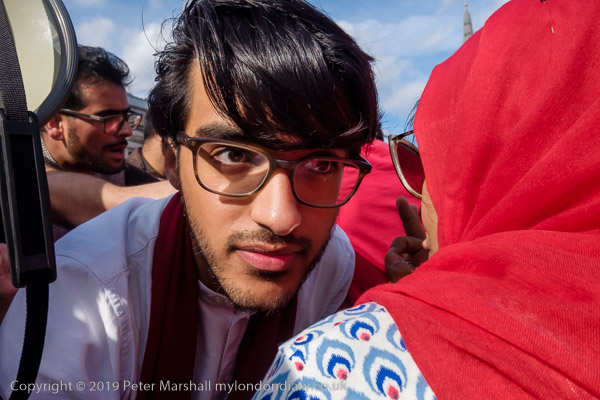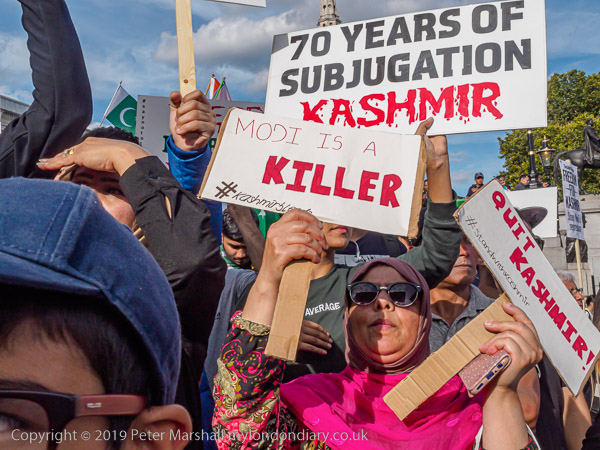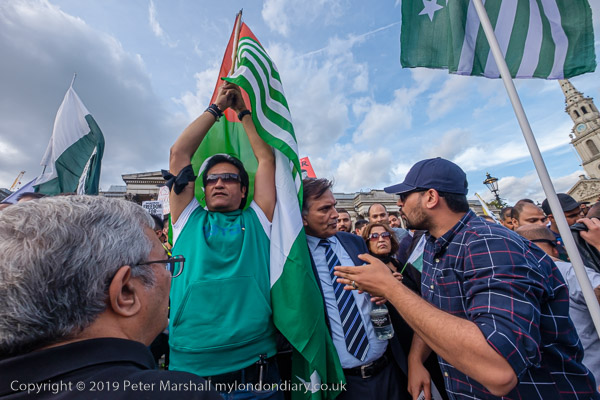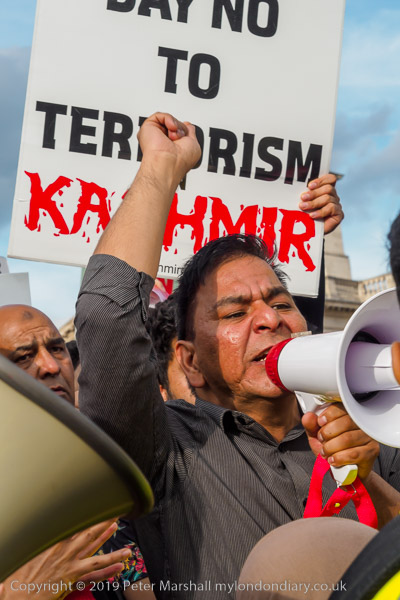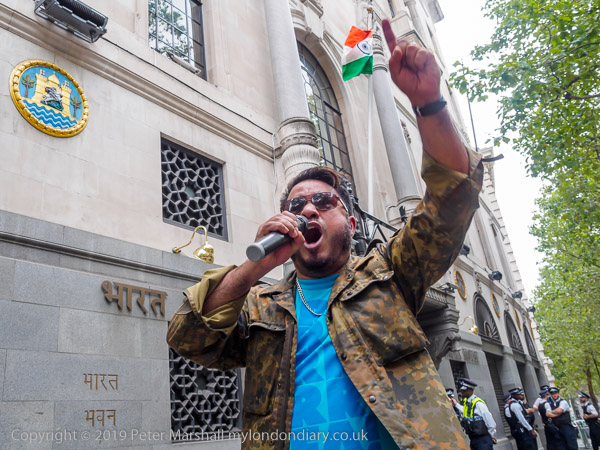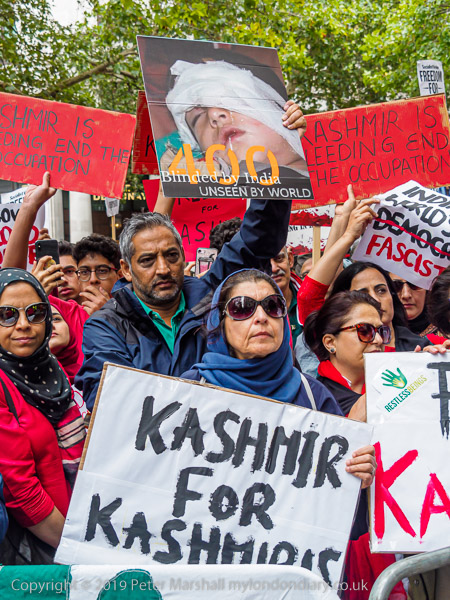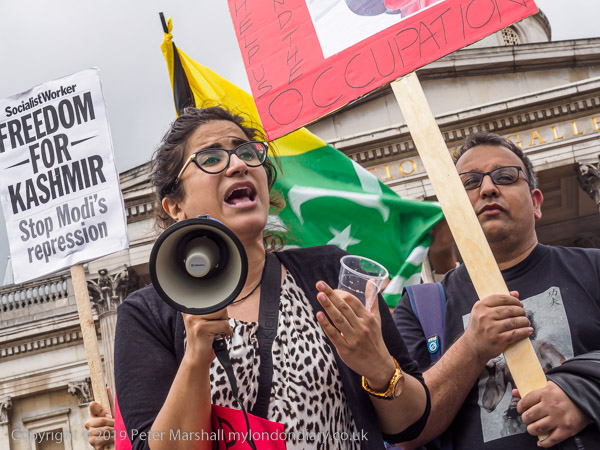Kashmiris and Cows: On Saturday 10th August 2019 I photographed three events, two of them by Kashmiris after the article of the Indian Constitution which guaranteed some autonomy for their state was revoked. Completely unrelated was a small protest by vegans against diary farming.
Kashmiris protest at India House and Trafalgar Square
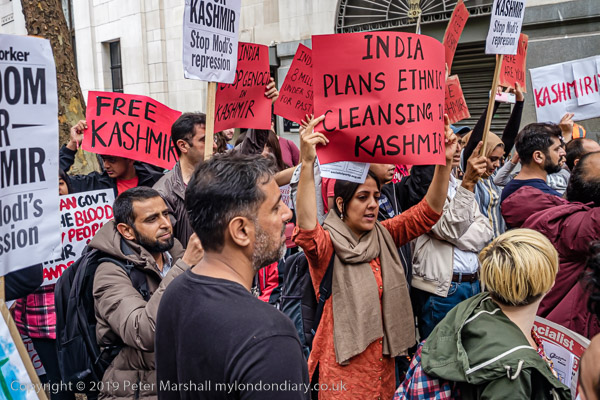
When the partition of India took place at independence from Britain in 1947, the state of Kashmir was an anomaly. Although this was a majority Muslim state it was not included in Pakistan as the then ruler decided it should become a part of India.
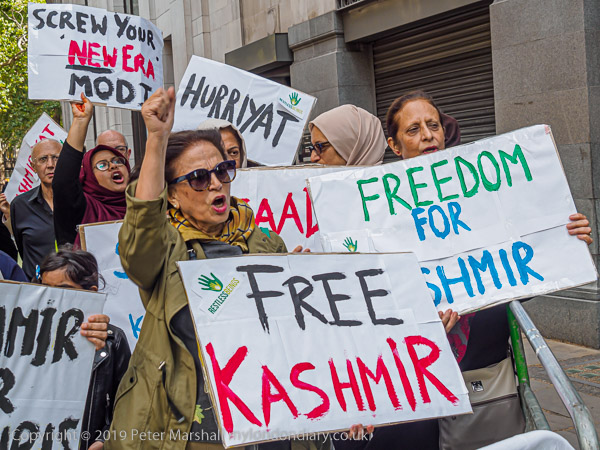
Kashmir has three regions, Jammu and Kashmir the largest, became a part of India, the Northern areas are under Pakistani administration and a smaller region on the east is controlled by China. The whole area has been disputed by India, Pakistan and China since 1947.
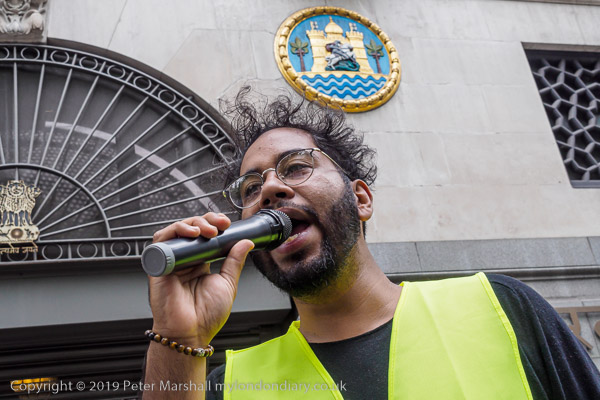
The special status of Jammu and Kashmir was recognised by Article 370 of the Indian constitution. This gave it “the power to have a separate constitution, a state flag, and autonomy of internal administration.“

Many Kashmiris objected to becoming a part of India and campaigned for independence with a brief rebellion leading to war between India and Pakistan in 1948-9. Various other conflicts came in later years and in 1989 an armed insurgency began, at first calling for independence but soon taken over by groups calling for merger with Pakistan.

The uprising has been suppressed over the years by a huge Indian military presence in Kashmir with an occupying force of around 800,000 military and paramilitary personnel and extreme levels of human rights abuses, including torture, deliberate blinding and killings.
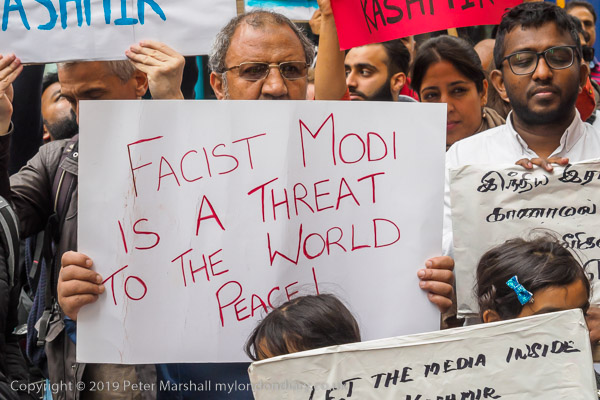
In August 2019, under the government of India’s Prime Minister Narendra Modi, Presidential Orders were made revoking Article 370, making Jammu and Kashmir a part of India on exactly the same basis as the rest of the country. They also split Jammu and Kashmir into two different areas, Jammu and Kashmir and Ladakh. Like many, the Kashmiris say Modi is a Hindu fascist and his action has united the country against India.
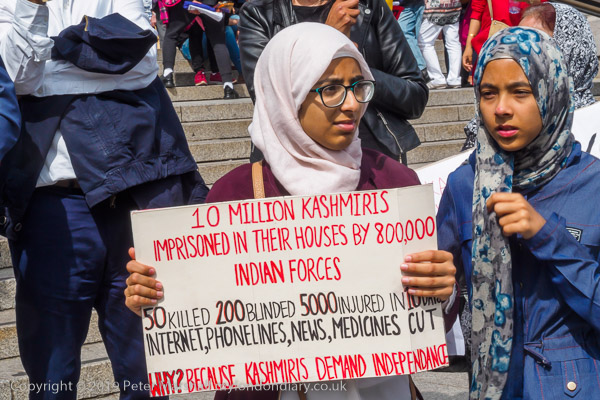
A large and noisy protest took place on the pavement in front of the Indian High Commission, after which the protesters marched to continue their protest in Trafalgar Square.
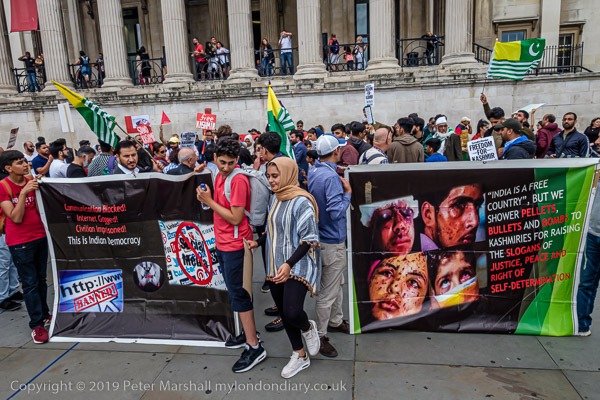
More in My London Diary at Kashmiris protest at India House and Kashmiris protest in Trafalgar Square.
Vegans Protest Diary Farming – Trafalgar Square
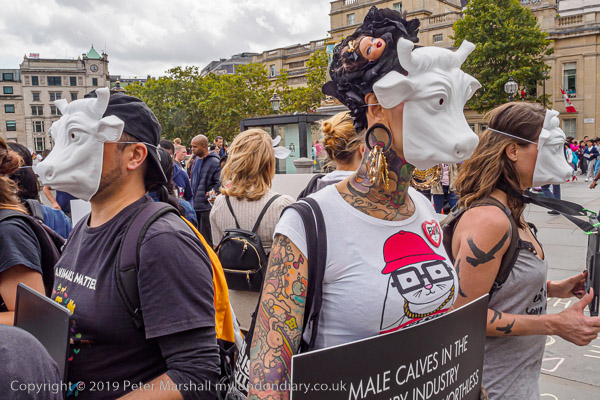
Protesters stood in a small block wearing cow masks in Trafalgar Square calling for an end to diary farming which they claim is inherently cruel, with milk being stolen from cows and male calves being slaughtered soon after birth.
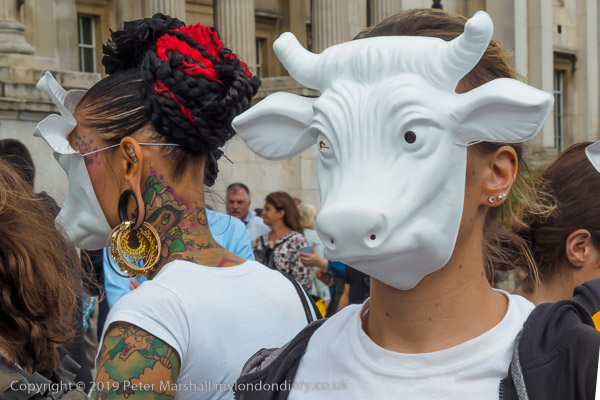
Vegan protesters call cows ‘mothers‘ and calves ‘babies‘, and they say that we ‘steal‘ the milk that the cows produce for their calves, failing to tell people that dairy cows have been bred to produce far more milk than their calves can consume, perhaps 7-10 times as much. And we only have cows in our fields because farmers breed them to produce milk for us to drink. We need to get away from emotional arguments and concentrate on the facts.
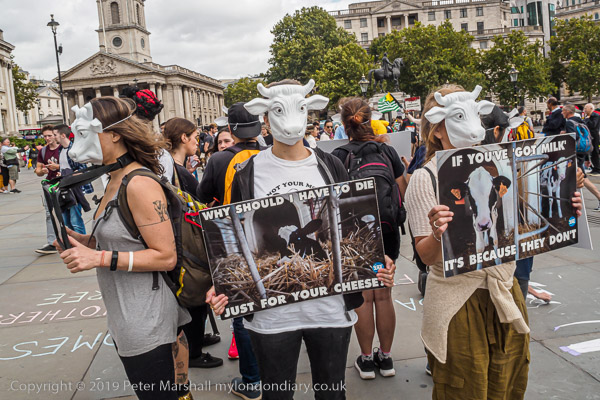
Traditional farming treated animals with care and respect – they were (and are) important assets. Some modern intensive practices are certainly cruel and should be condemned, both here and in other countries which mainly have even less strict animal welfare regulations. We could have a dairy industry which treated animals better and many of us would be prepared to pay more for the milk it produced.
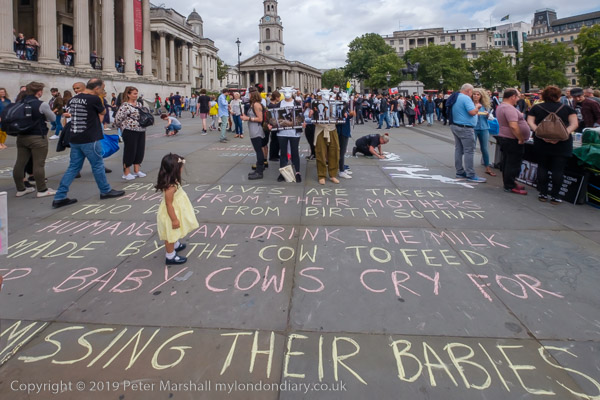
There are good reasons to eat less meat and less diary products, but protests like this trivialise the issue. Good reasons why some people become vegans, but also good reasons why we should farm some animals to produce milk and meat. It would be a disaster for the environment if we all became vegan.
Flickr – Facebook – My London Diary – Hull Photos – Lea Valley – Paris
London’s Industrial Heritage – London Photos
All photographs on this page are copyright © Peter Marshall.
Contact me to buy prints or licence to reproduce.
